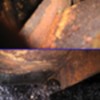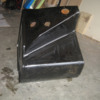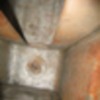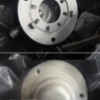I spent a couple of hours last night reading through all the old post that I could find on fuel tank sealers and liners. I think I may have information overload on which product to use.
I just picked up my fuel tank yesterday from having it boiled out due to the old owner letting it sit with fuel in it for over 20 years. The tank looks really good inside now but has some minor rust in it. It mainly looks like flash rust but not 100% sure, so I have been contemplating using Muriatic Acid and then a tank sealer or liner.
I was wondering which brand that you have you had the best experience with. The most prominent ones seem to be Eastwood’s, Summit Racing’s, POR 15, and Red-Kote. Here is what the individual companies say about their products:
Eastwood’s states their “sealer kit” coats the tank with “elastomer” and “resists fuel additives and is compatible with both gas and diesel fuels”.
Summit states their “liner" is a “flexible membrane that won’t crack or flake” and that it is “resistant to gas, methanol, alcohol, and diesel fuel”. It also states that it is bright red “liner” which kind of makes me think it is similar to Red-Kote.
POR15 states that their “sealer” is “impervious to all fuels, including the new Stage II fuels which have a high alcohol content” and that it has “superior strength and fuel resistance”.
Red-Kote states that their “liner” is a “solvent-based polymer coating which is resistant to gasoline, diesel fuel, alcohol and other fuel additive” and that it “seals rust and prevents future rusting”.
Thanks for any input you may have.
Garvino
P.S. I did read a few Pantera posts that talked about sealer/liner coming loose and causing problems. Anyone else ever experience this?
Original Post






